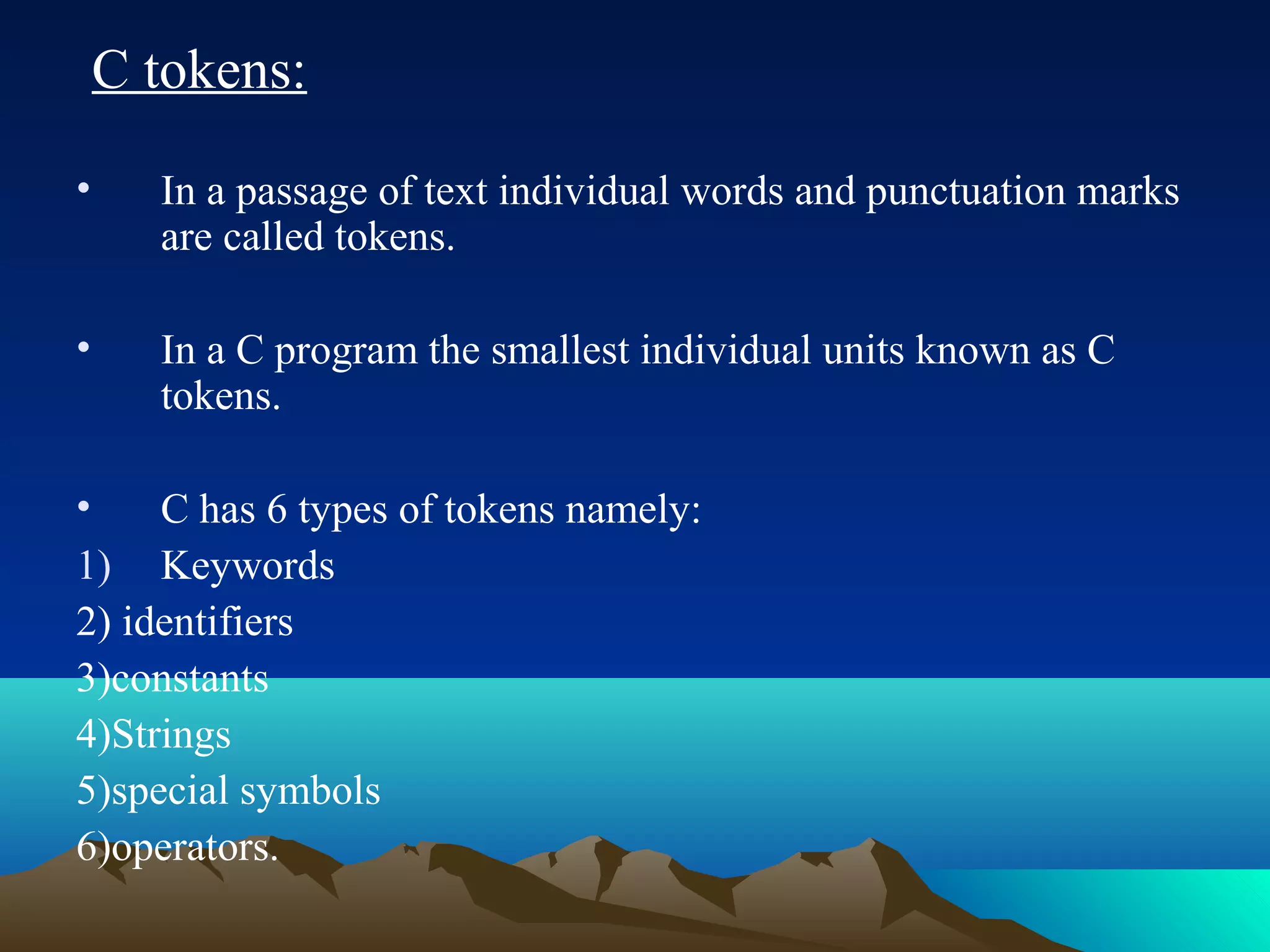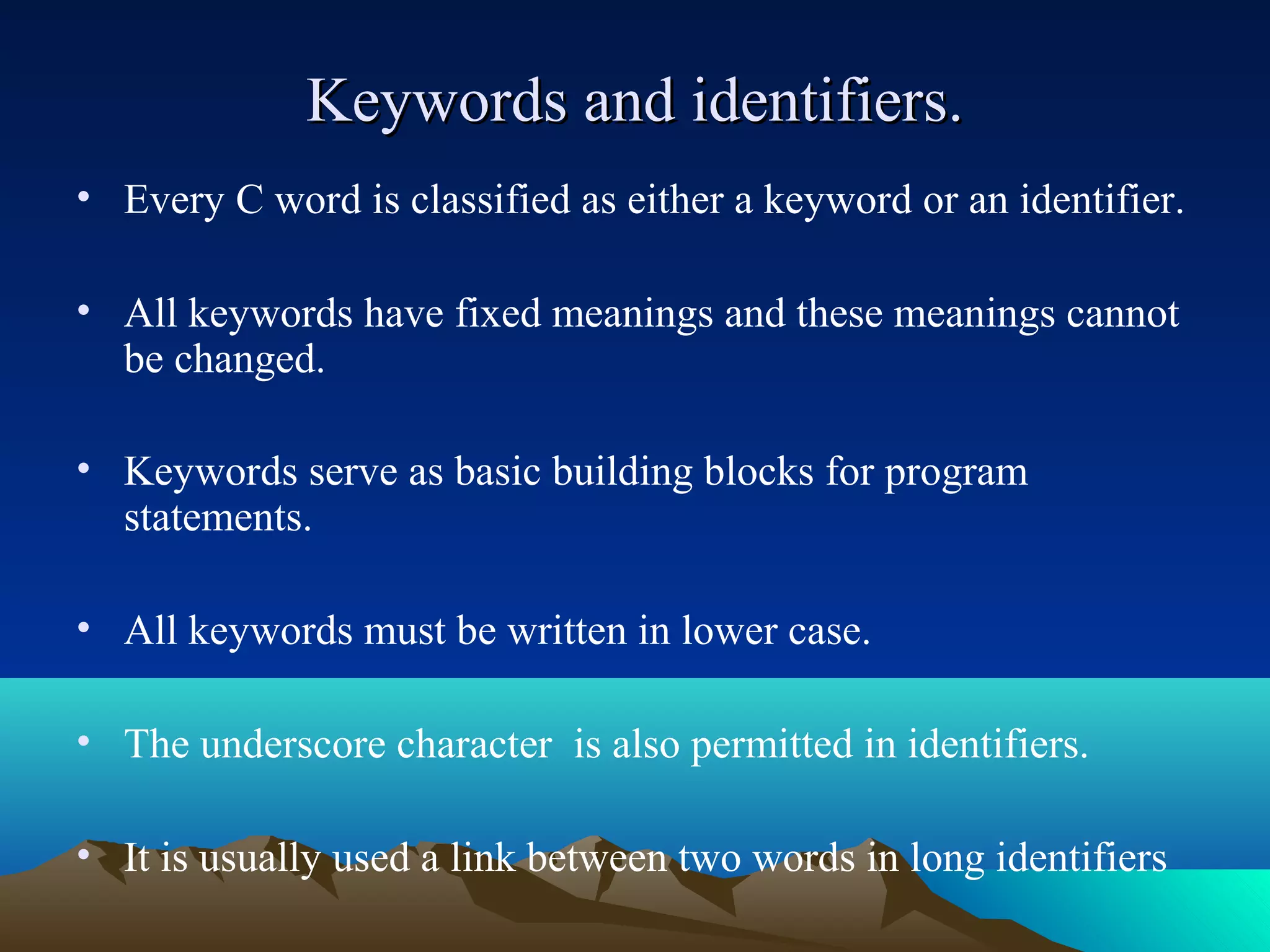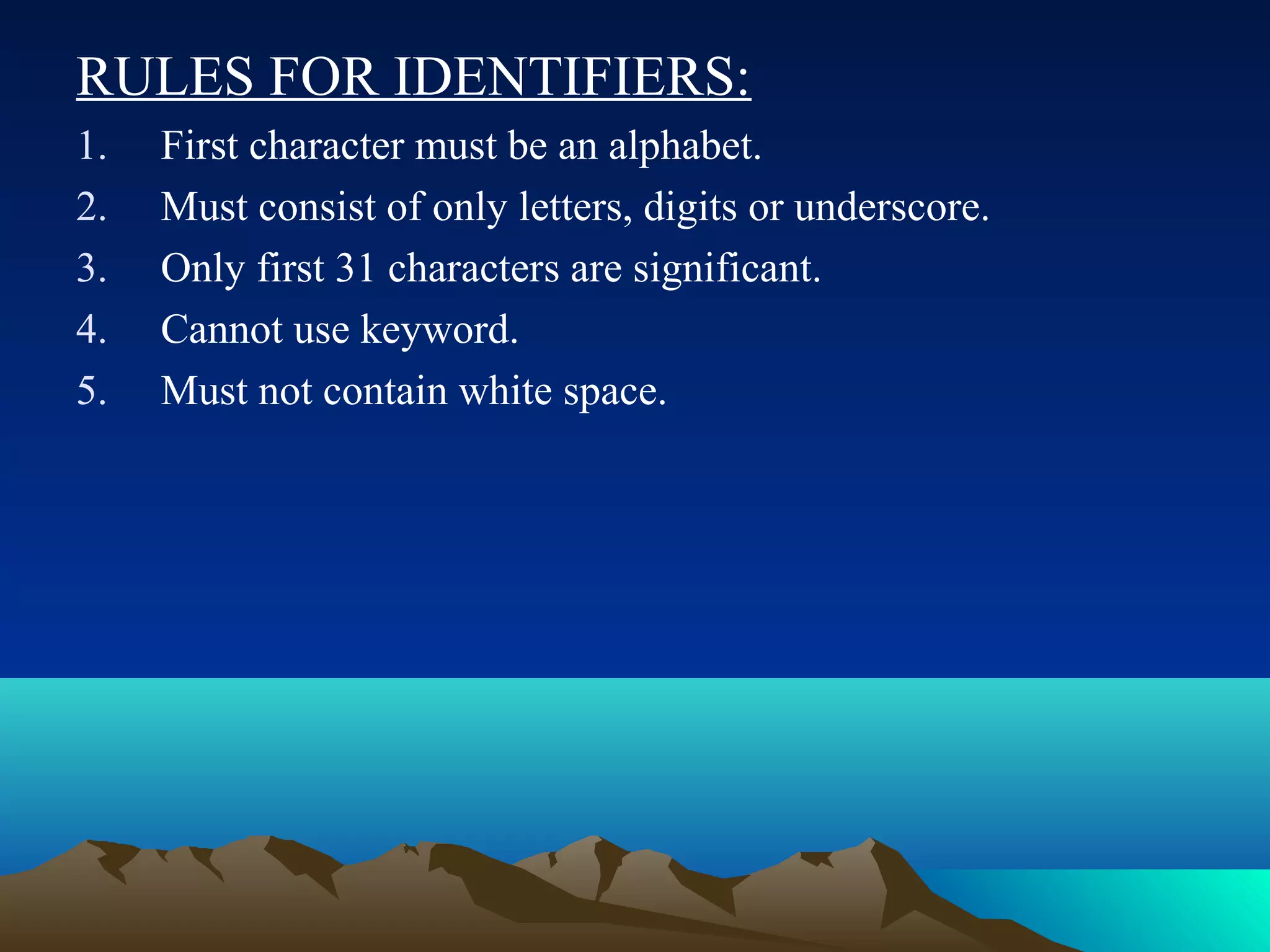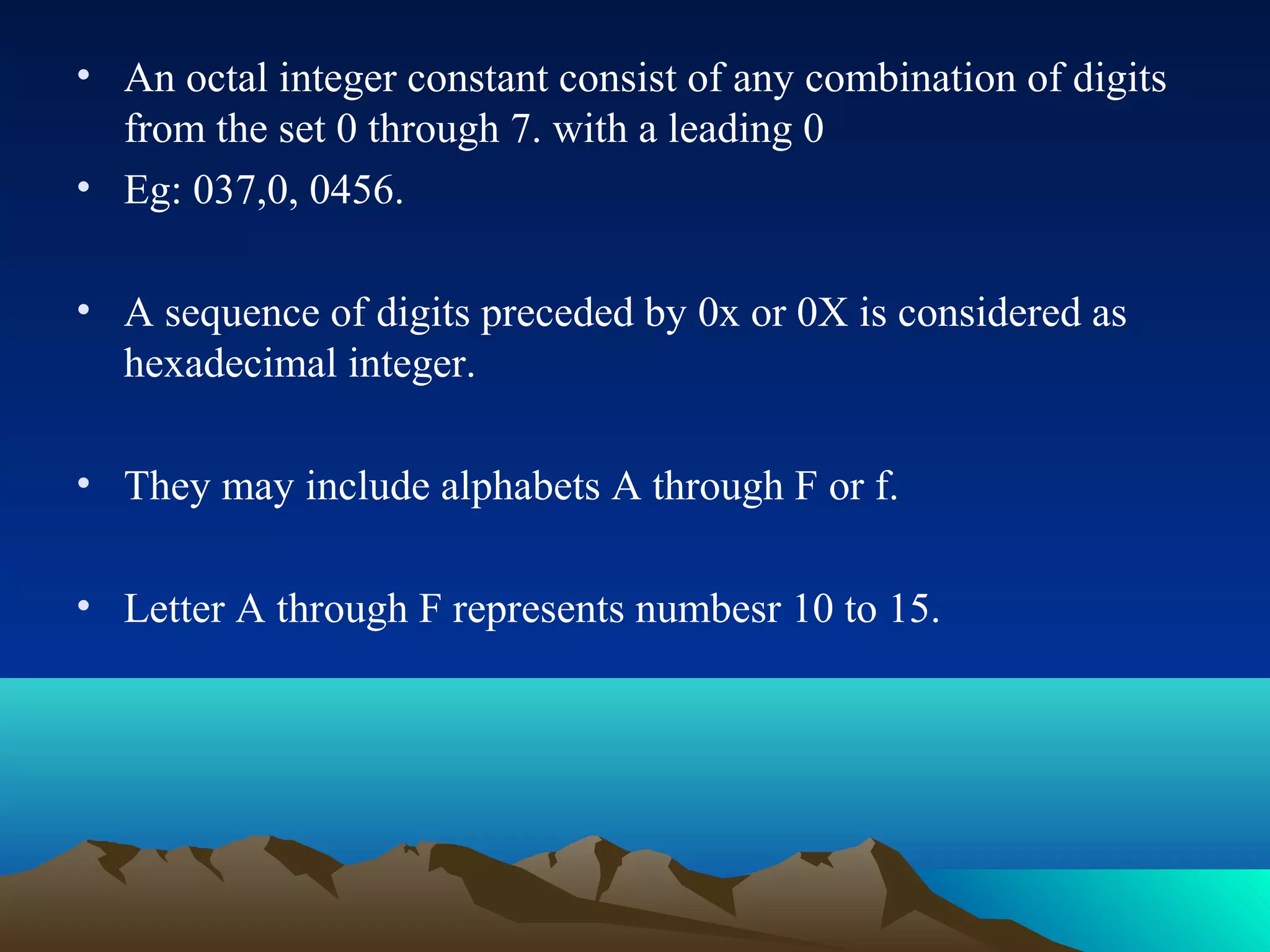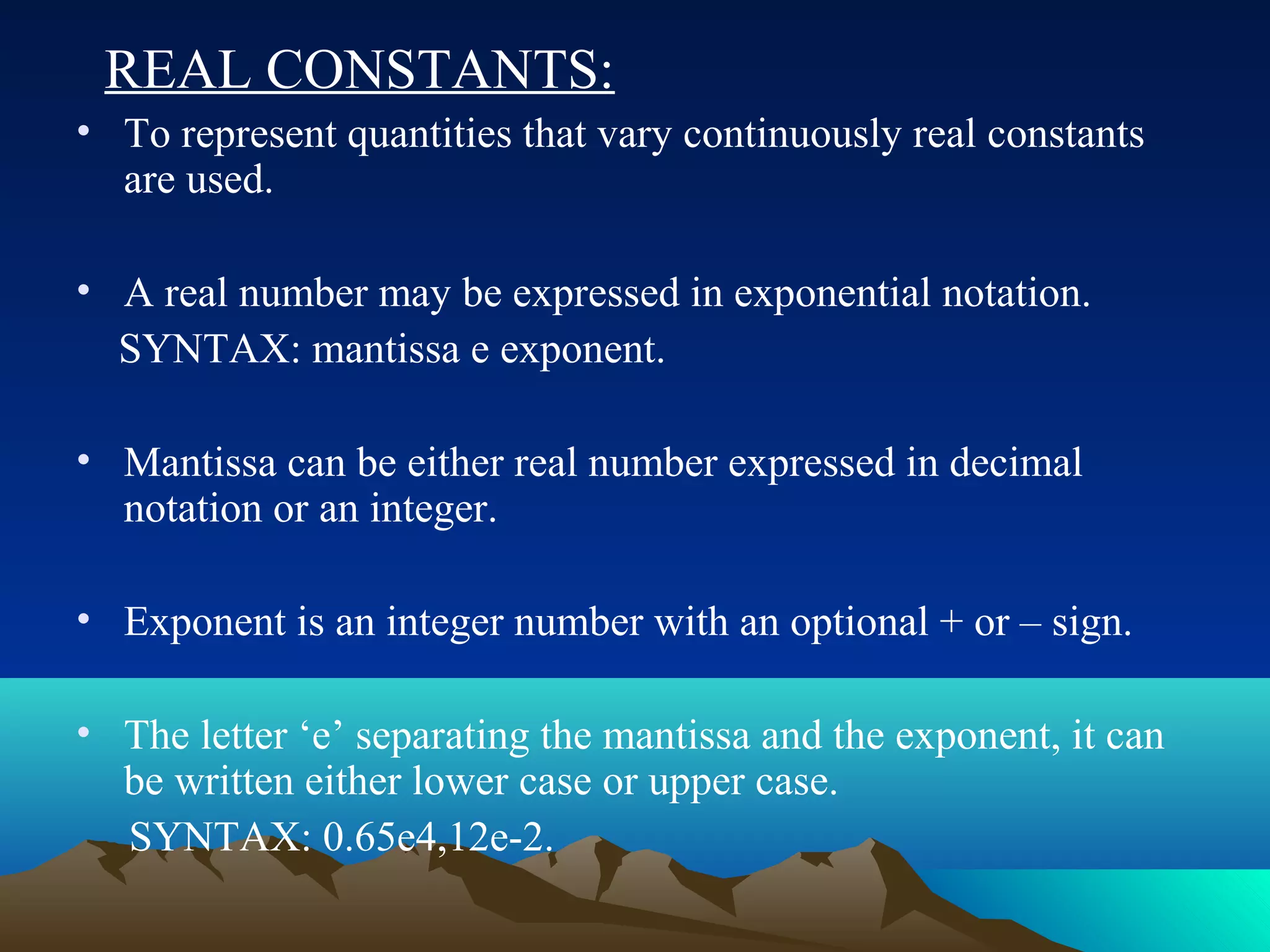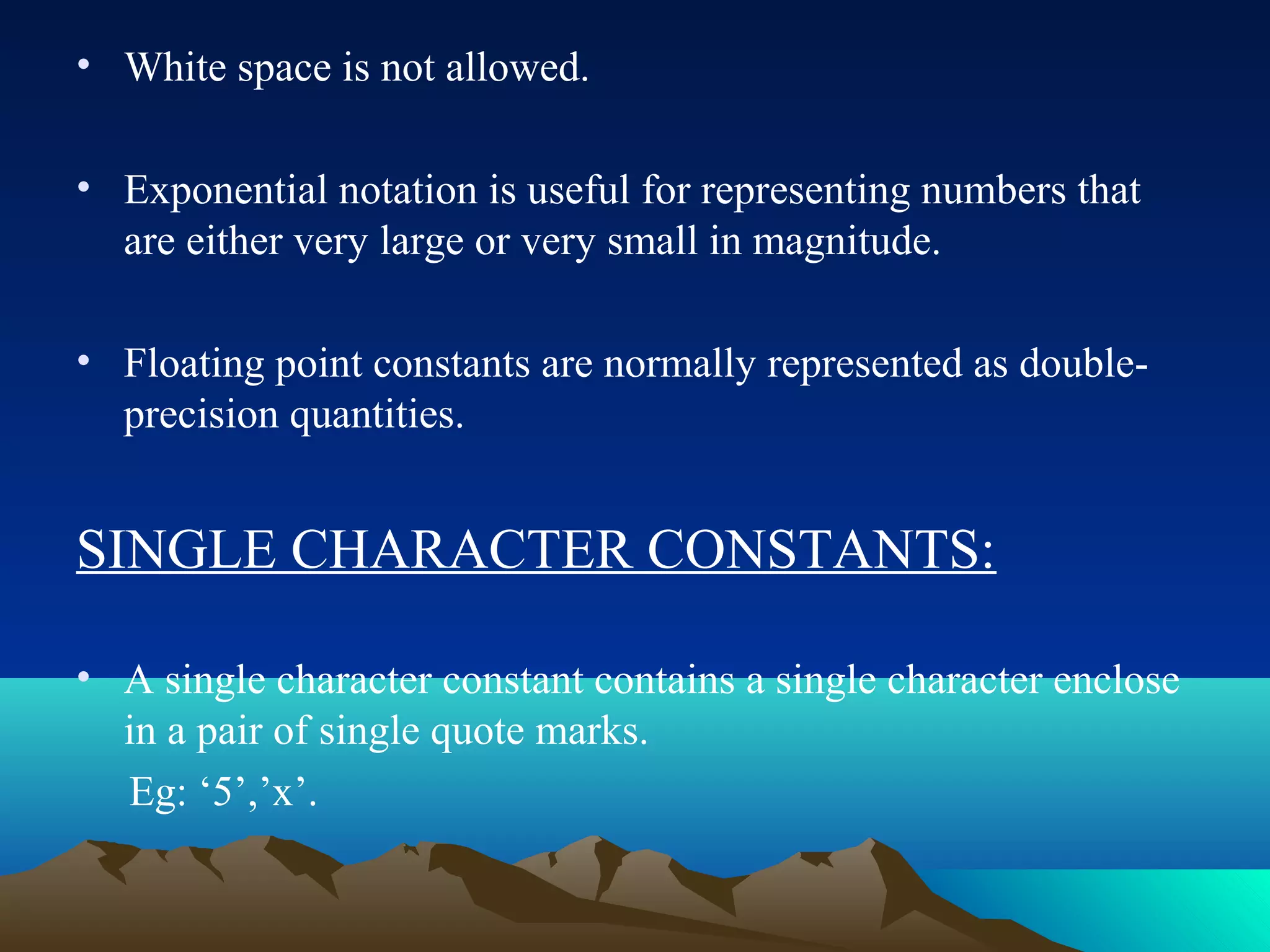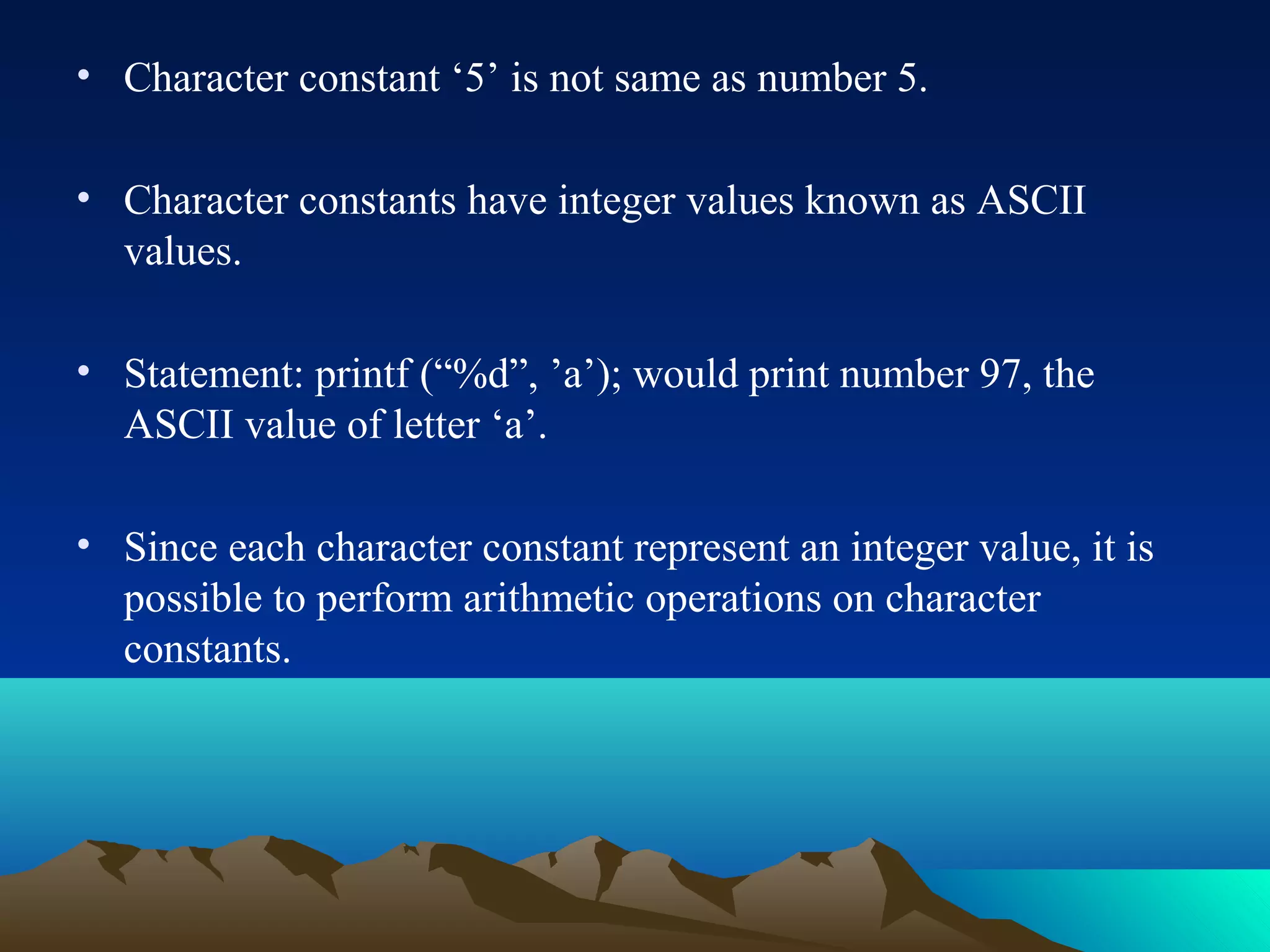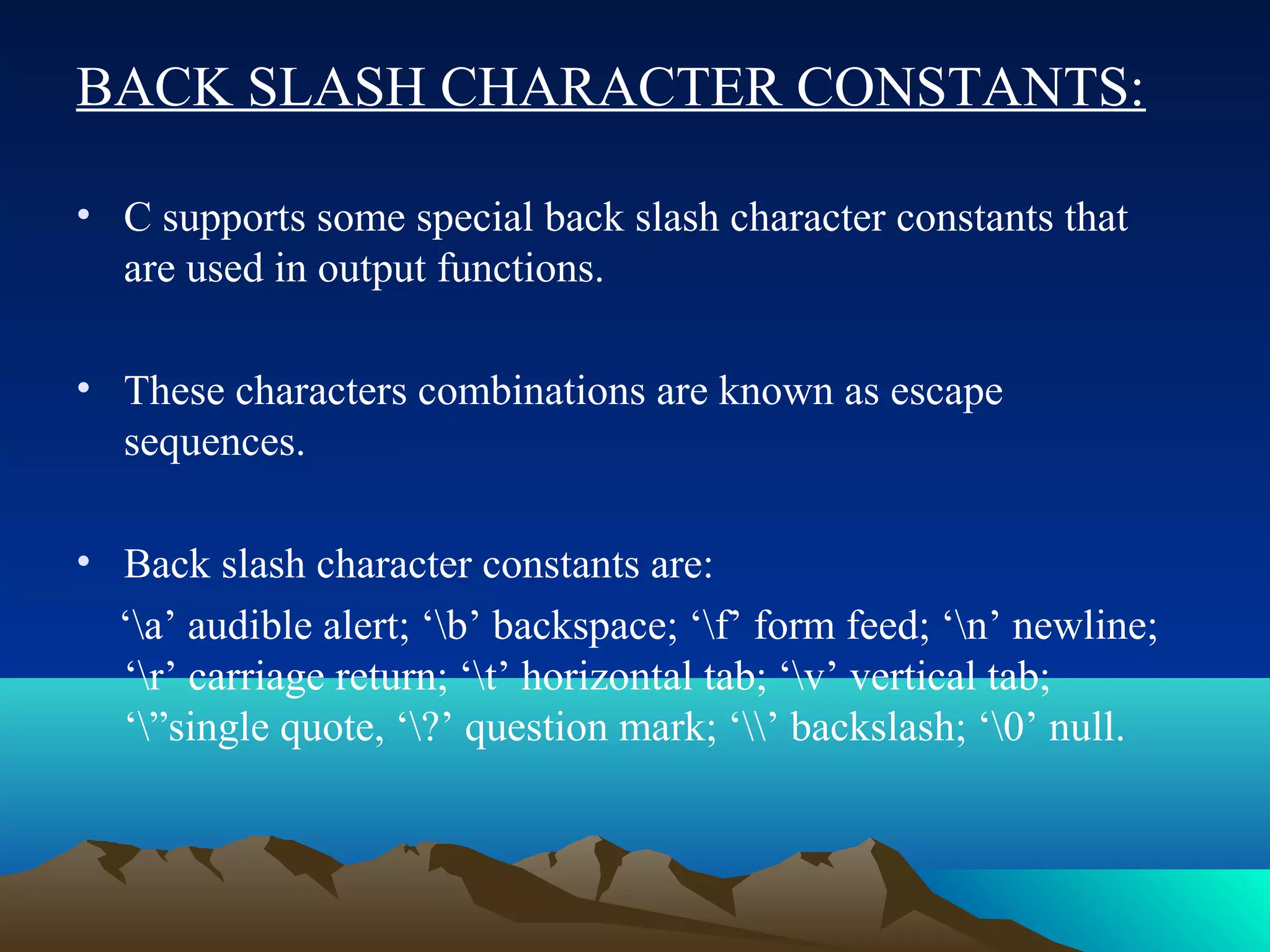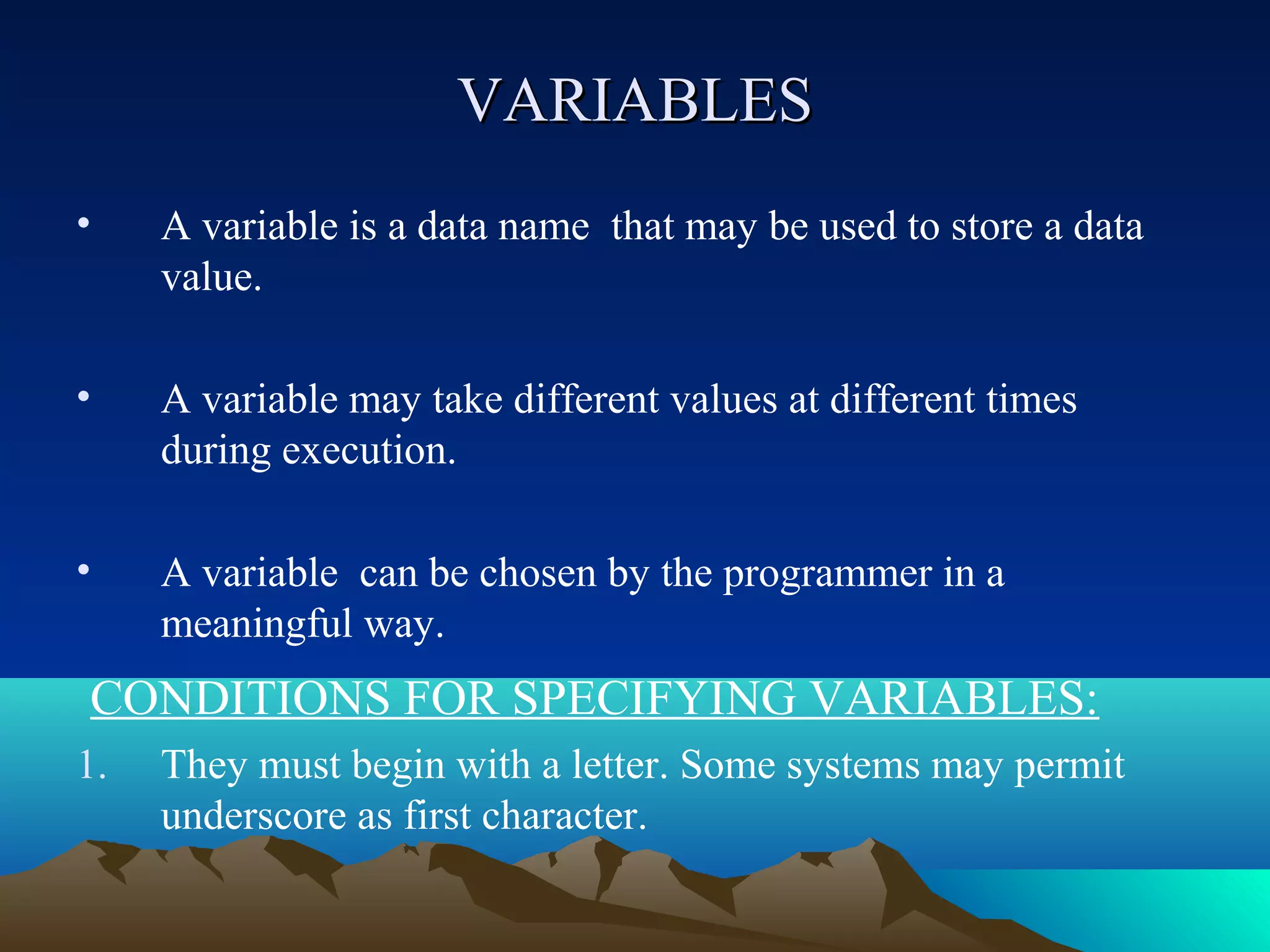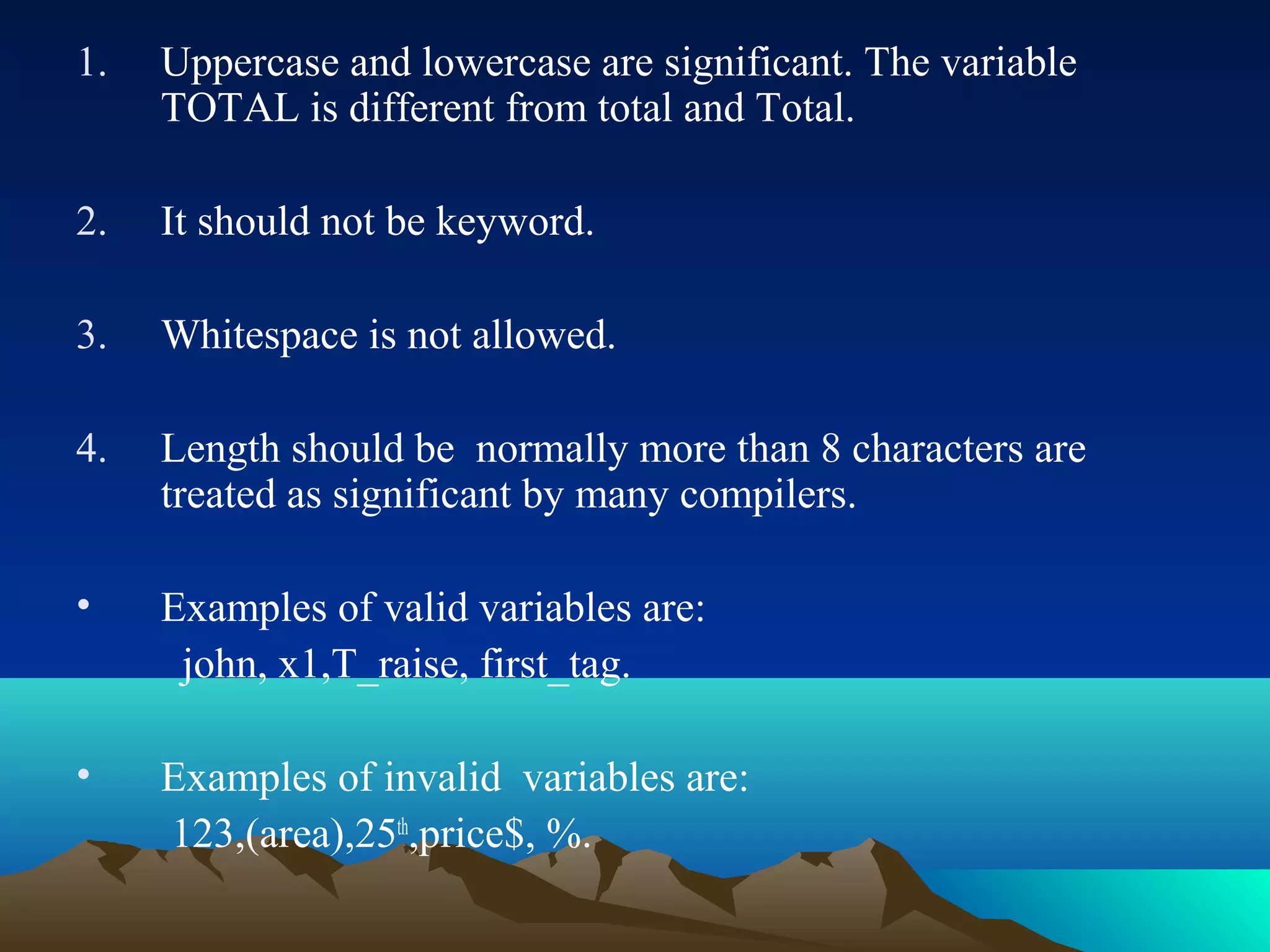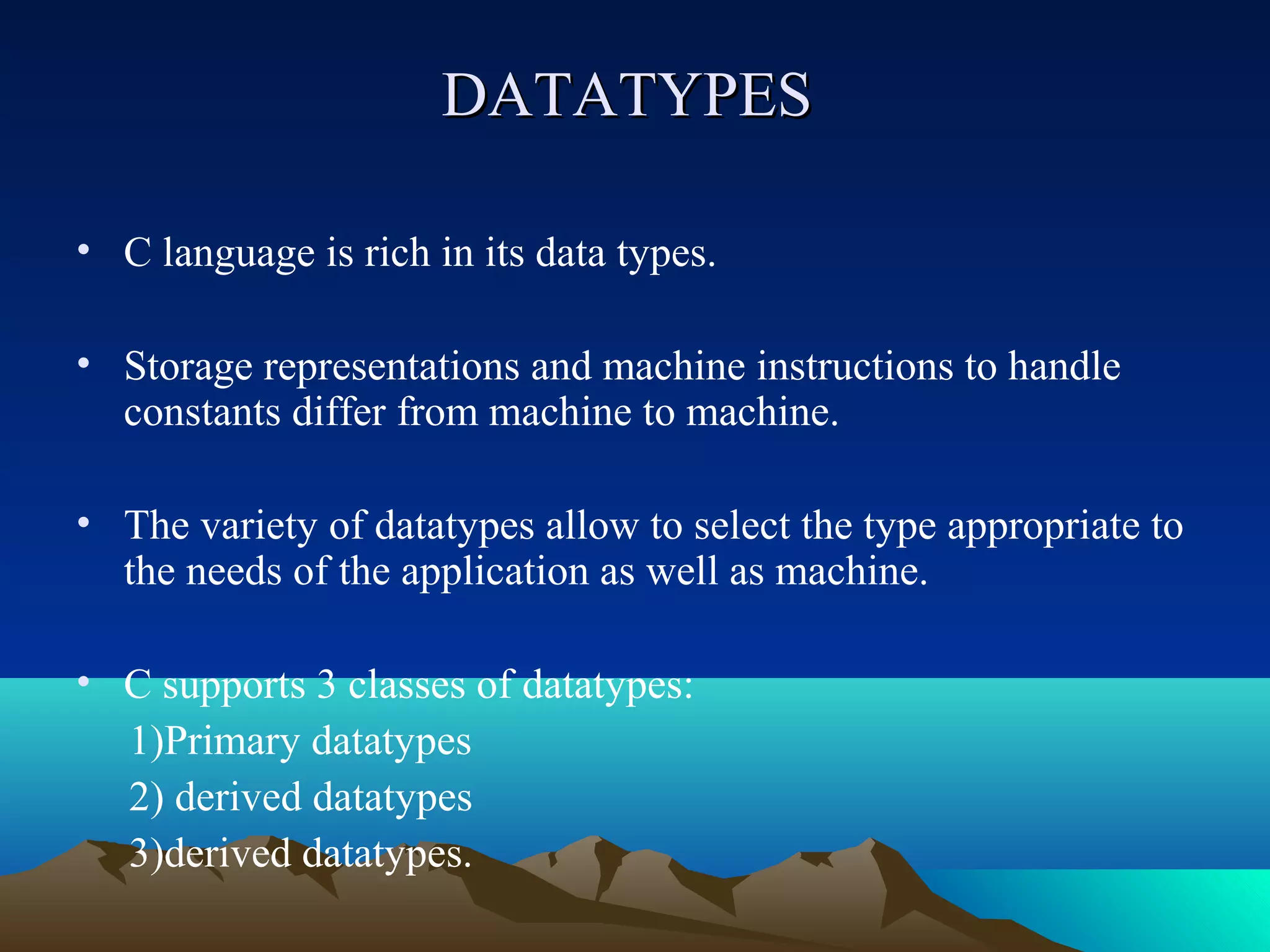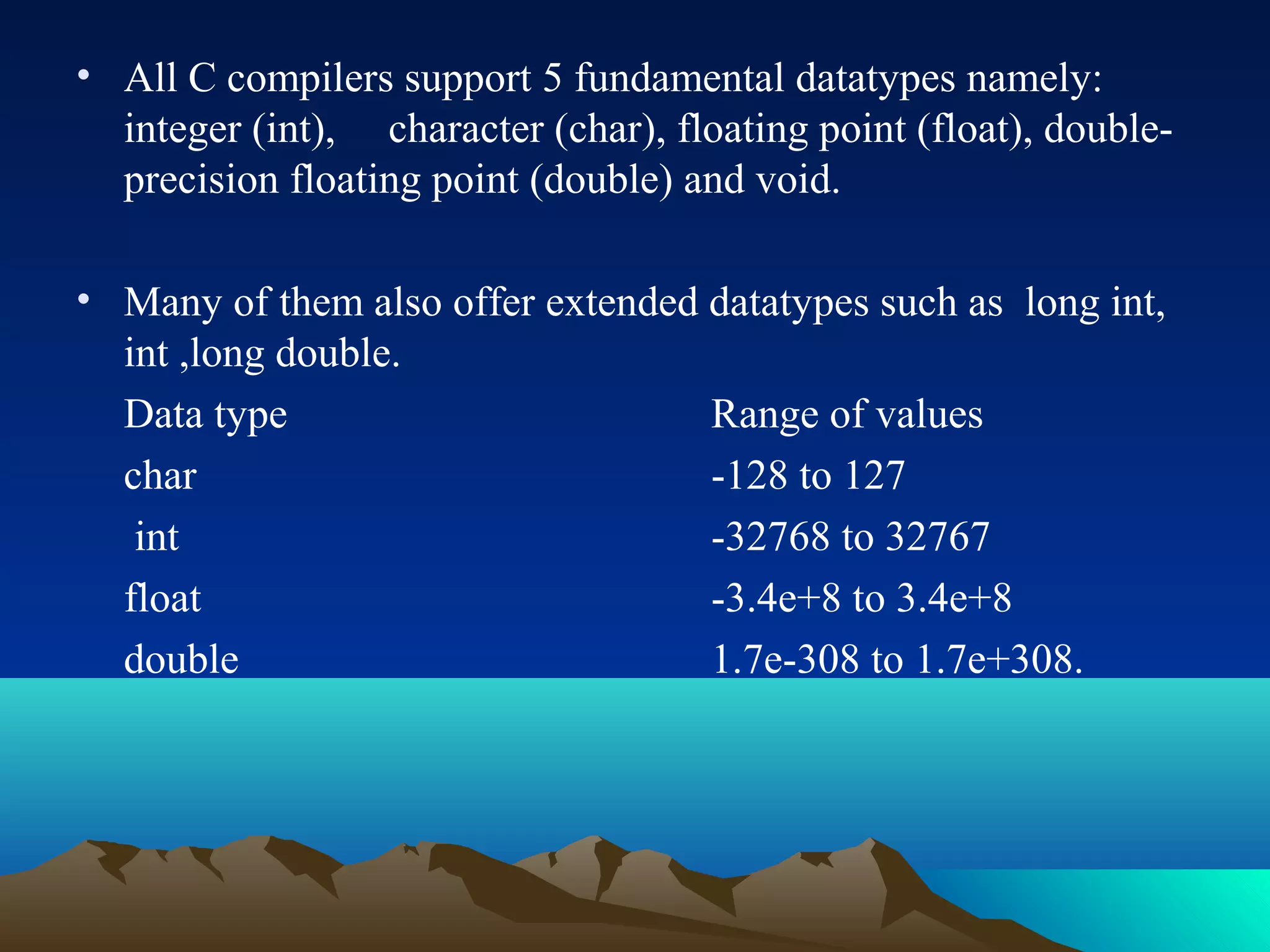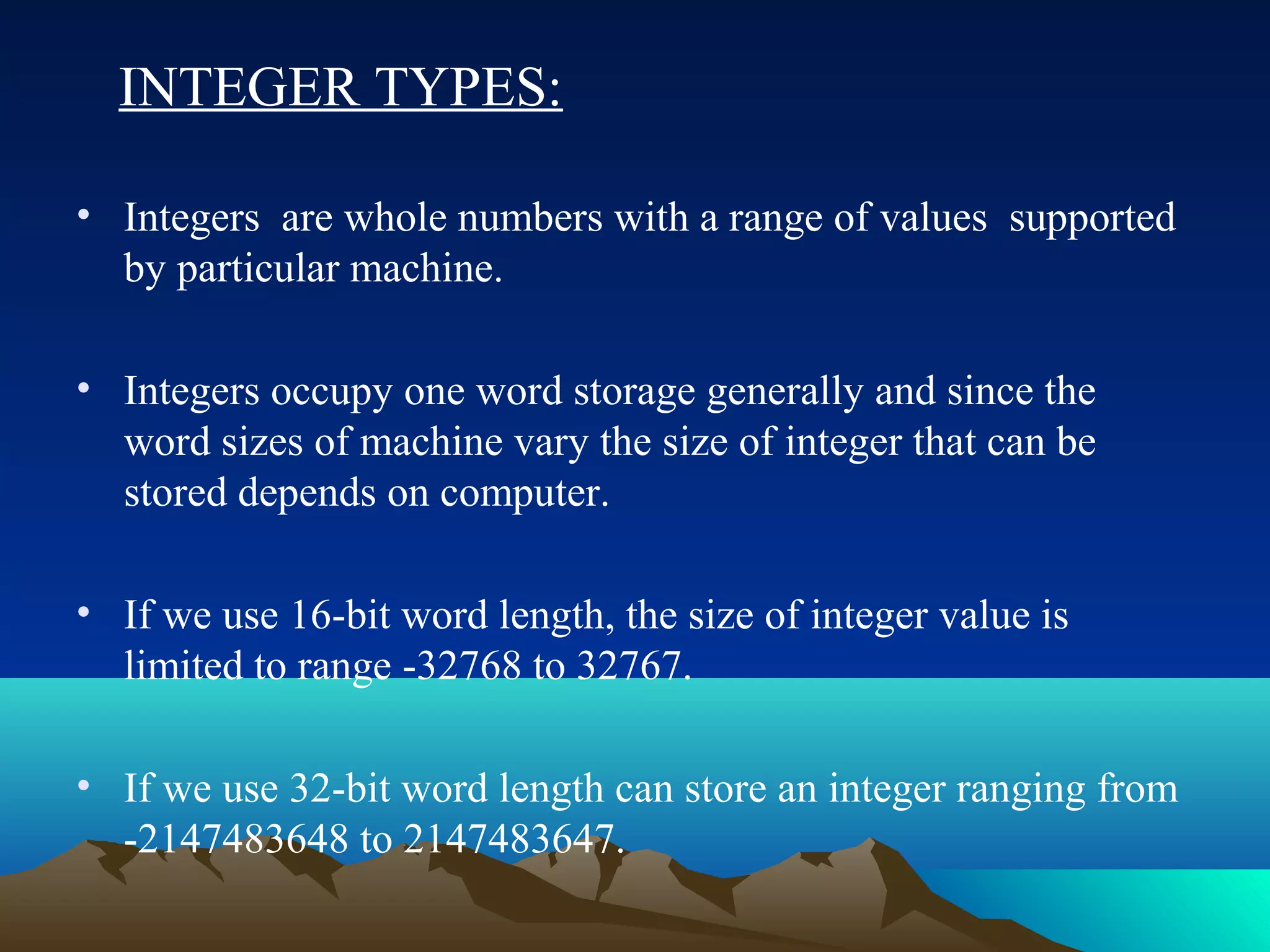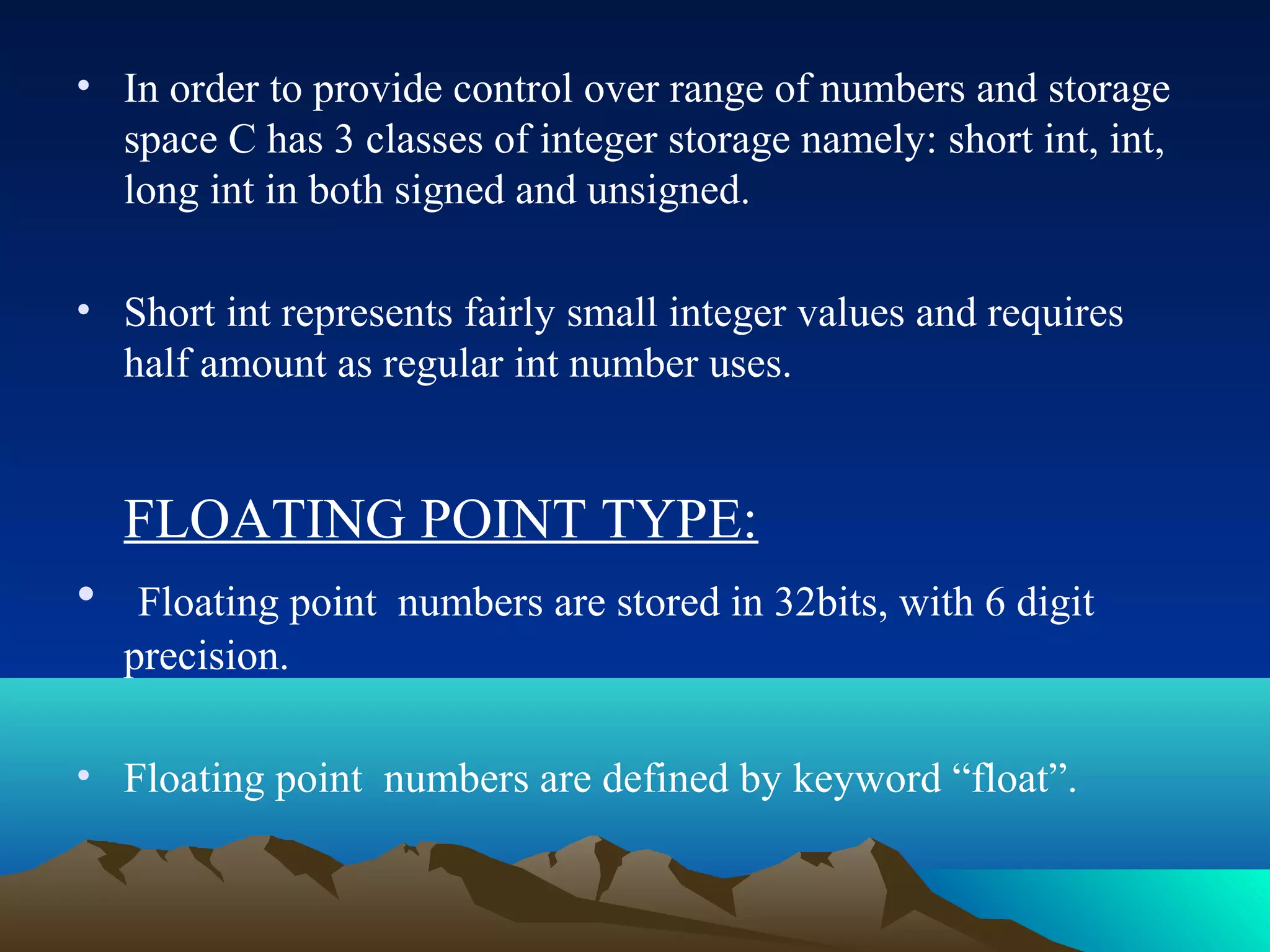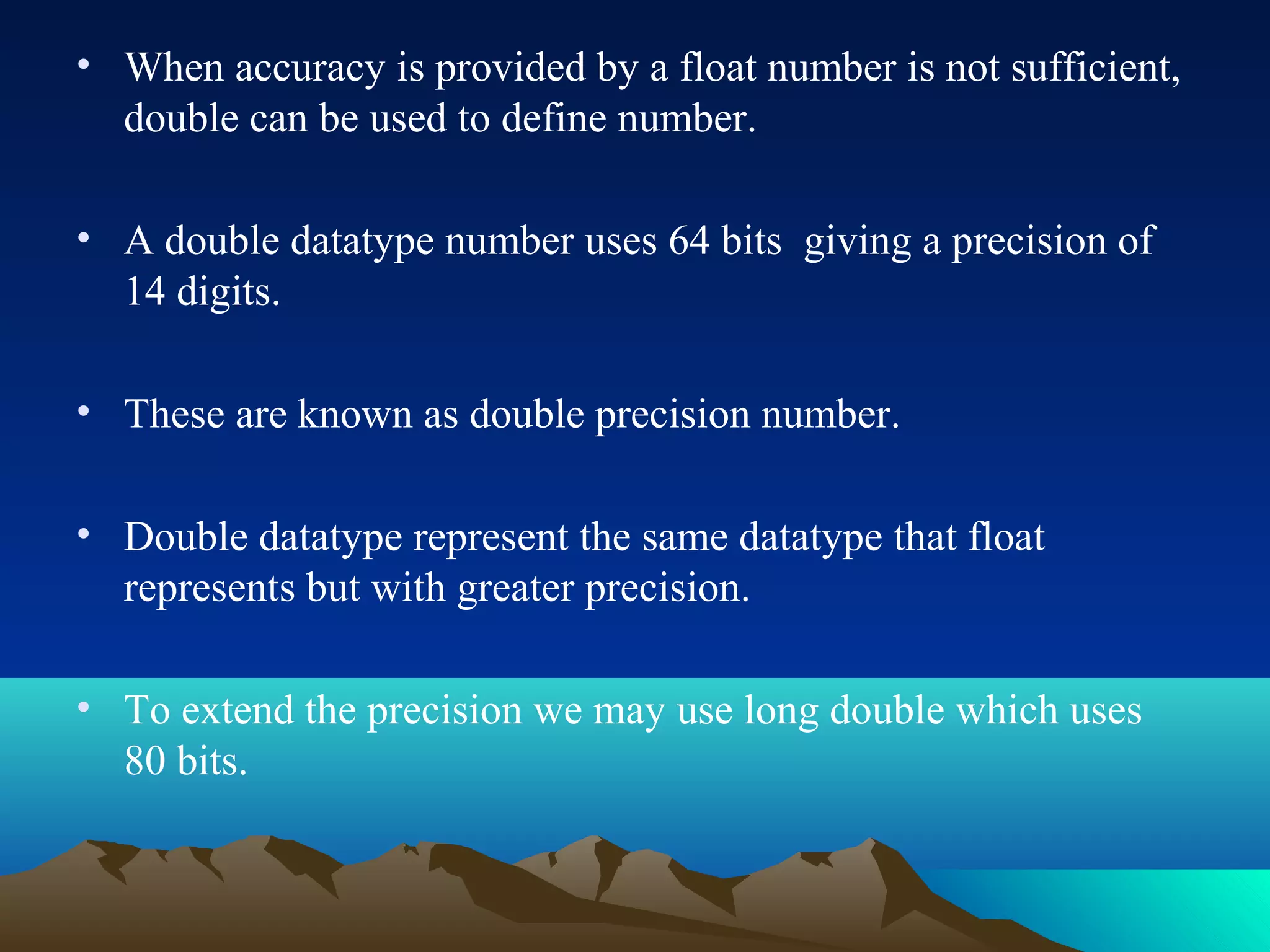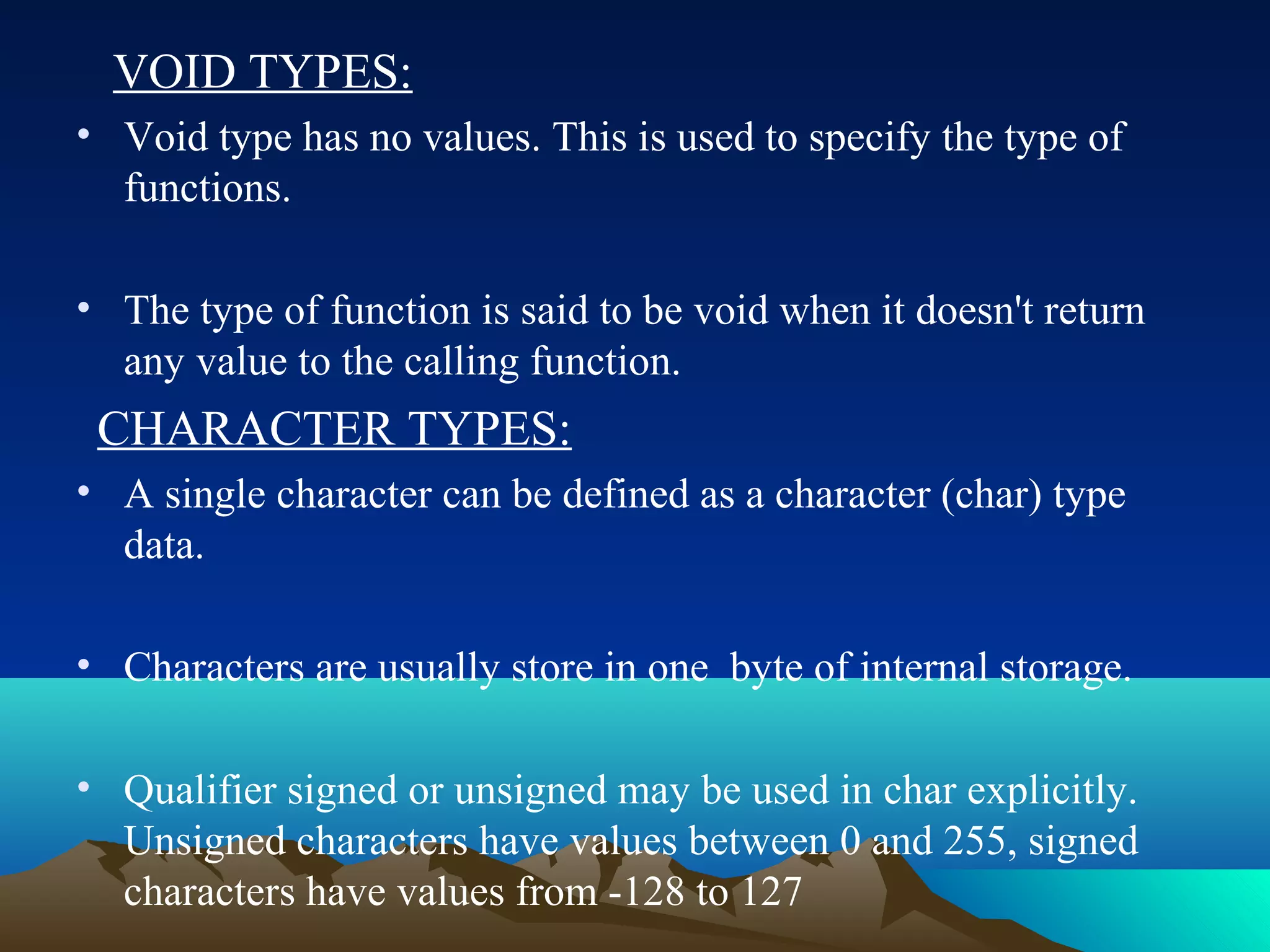This document provides an overview of constants, variables, and data types in the C programming language. It discusses the different categories of characters used in C, C tokens including keywords, identifiers, constants, strings, special symbols, and operators. It also covers rules for identifiers and variables, integer constants, real constants, single character constants, string constants, and backslash character constants. Finally, it describes the primary data types in C including integer, character, floating point, double, and void, as well as integer, floating point, and character types.
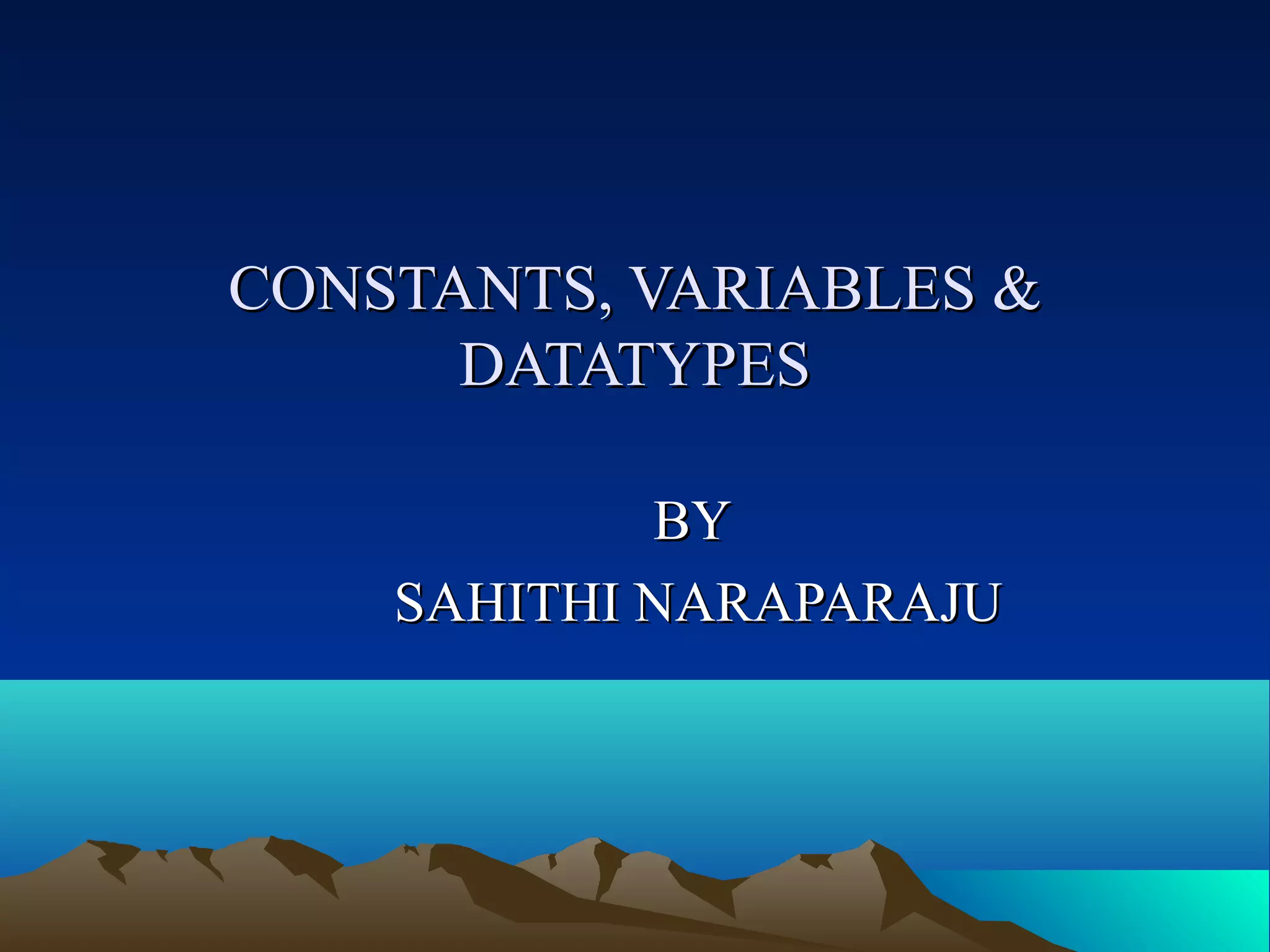

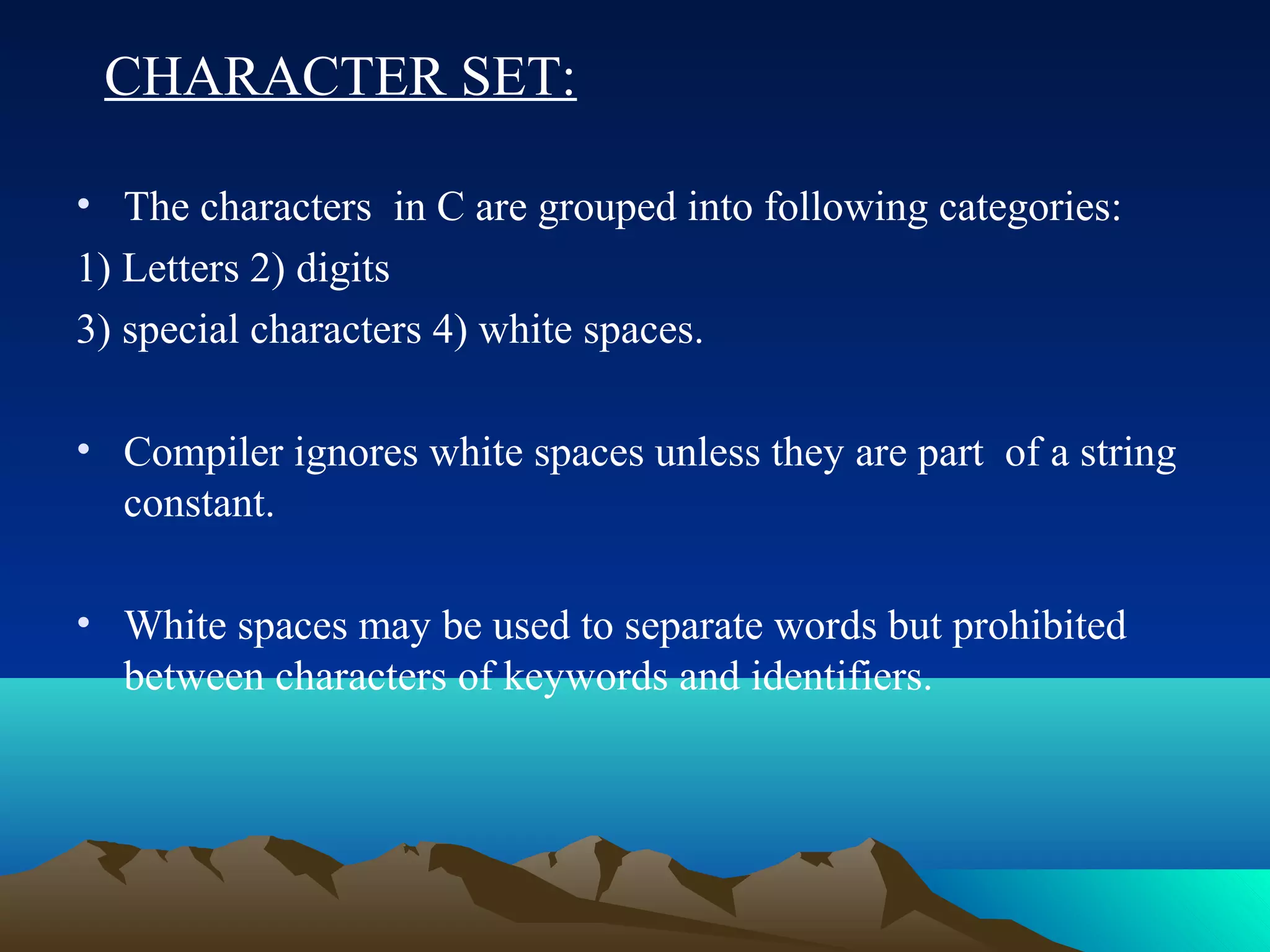
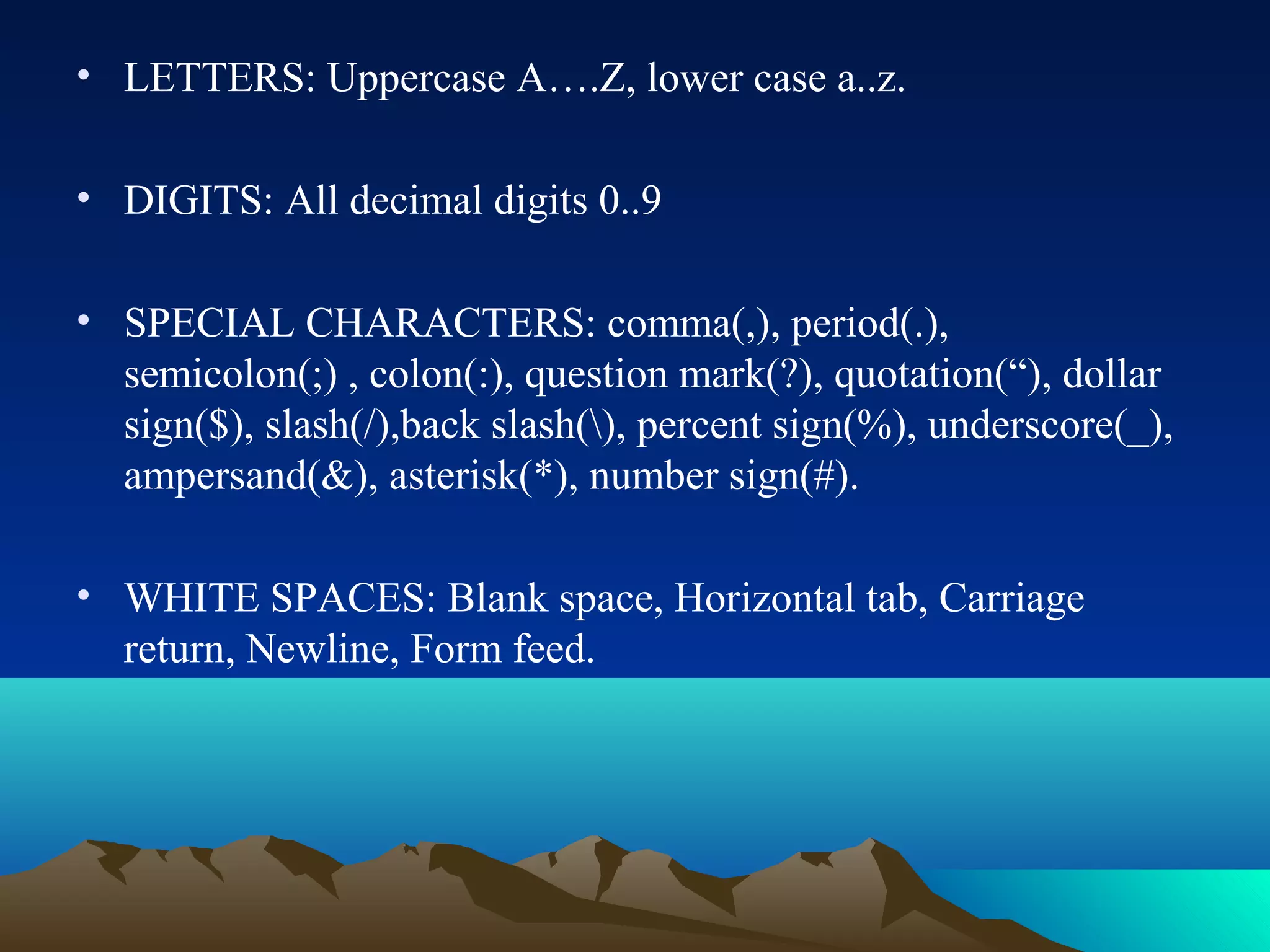
![Trigraph characters:
• C introduces the concept of trigraph sequences to provide a
way to enter certain characters that are not available on some
keywords.
• Each trigraph sequence consists of three characters, 2 question
marks followed by another character.
• Eg: ??= (number sign), ??)(right bracket]), ??( (left
bracket[) , ??! (vertical bar), ??< (left brace {) , ??> (right brace
}),??/ (back slash).](https://image.slidesharecdn.com/newmicrosoftpowerpointpresentation-131121015923-phpapp02/75/constants-variables-and-datatypes-in-C-5-2048.jpg)
